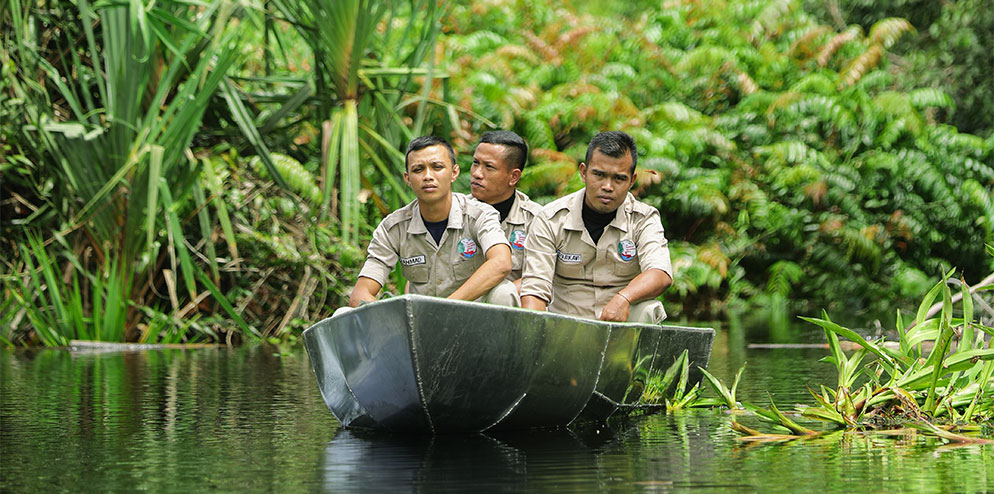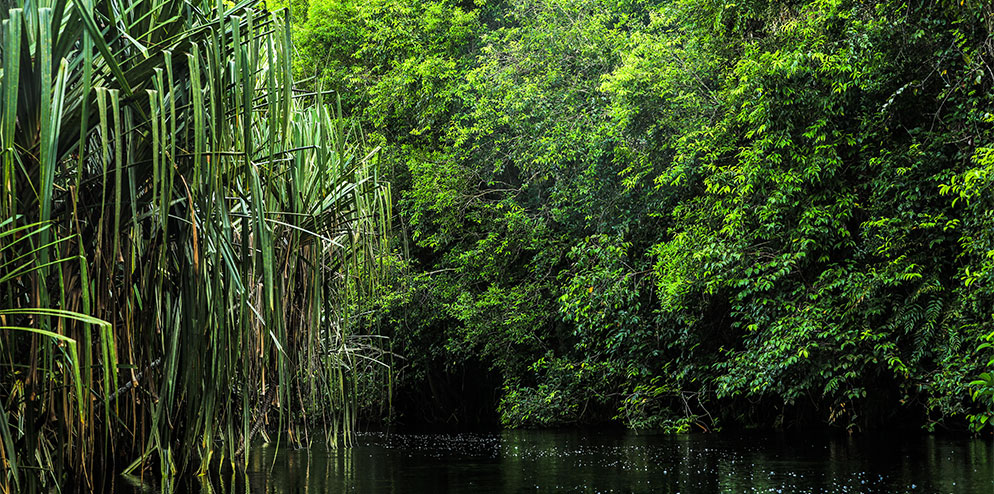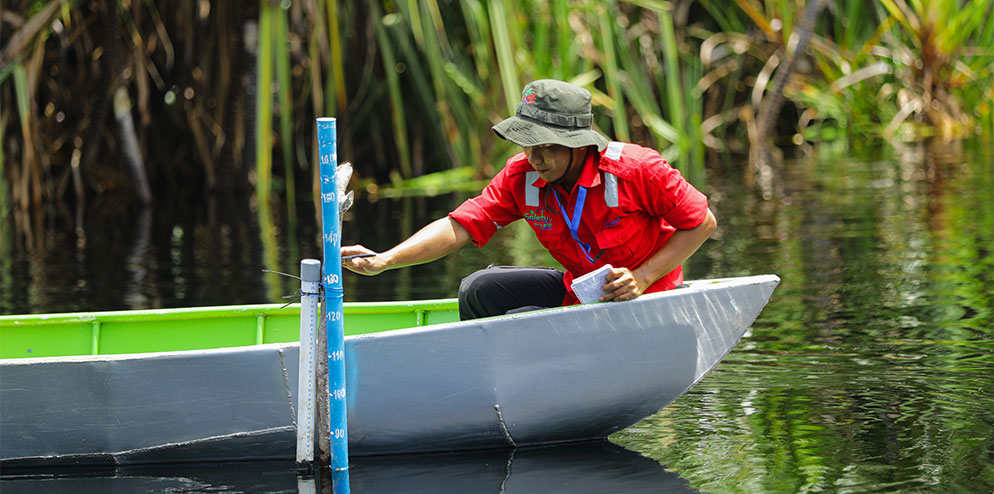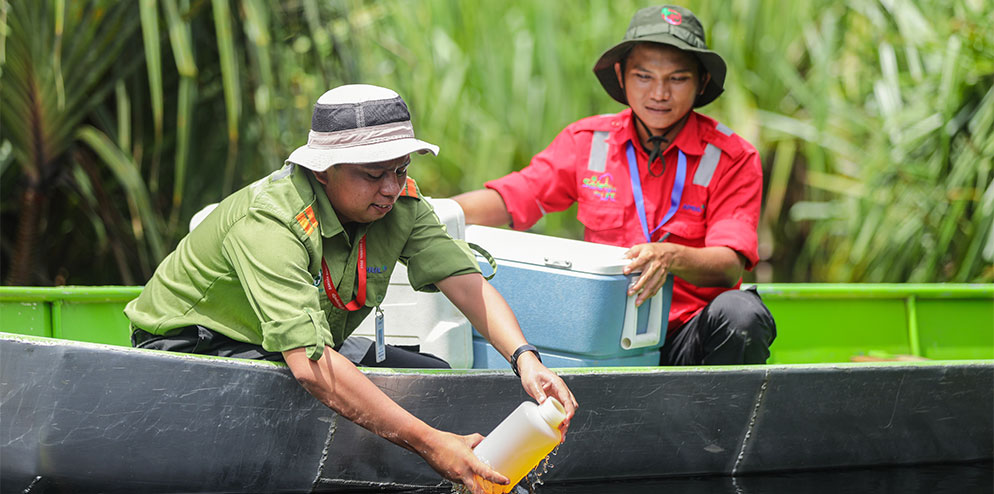The Kampar Peninsula in Sumatra is one of the largest areas of its kind in Southeast Asia, with a rich biodiversity and high carbon stocks.
In its natural state, a tropical forested peatland is composed of over 90 percent water. The source of this water is rainfall, which varies widely from month-to-month, from less than 50mm to well over 400mm, with alternating wet and dry seasons that occur twice each year.
The accumulation of and loss of tropical peat are controlled by water table dynamics. A peatland area is considered to be in a healthy condition if it is actively accumulating peat, and certain plant communities and the locations in which they are found on the peatland are indicative of peat-forming conditions. The fluctuation of the water table is important to monitor because the seasonality of rainfall affects peat accumulation. It is estimated that undisturbed tropical peatlands with normal rainfall can accumulate 1-to-3 millimeters of peat depth every year.

The water table depth in the peat varies seasonally with rainfall, evapotranspiration, and ground water. In the wet season, water may be several centimeters above the soil surface. In the dry season, the water table will drop below the surface, as much as 150 centimeters during extended droughts of two months or more.
Prior to 2013, RER experienced decades of commercial and illegal logging that removed individual large trees. To facilitate access, loggers constructed networks of drainage canals that stretched many kilometers from the river banks to locations deep in the forest. These drainage canals range in width from 1-to-9 meters and approximately 0.5 meters-to-1.5 meters deep. From these arterial canals, a rail network was constructed to move logs from the forest to the canal, where the logs were then floated out to the river.

Once logging stopped, the rails and canals remained, draining the peat and degrading the surrounding forest. Today, the forest along the rail systems is progressively and naturally regenerating. However, the canals continue to drain water from the peat soil, changing the soil moisture characteristics and therefore altering the type of vegetation that would otherwise grow in the peat forest.
RER’s goal is to restore the hydrology of the peat forest by closing these drainage canals and restoring water table changes to near-natural seasonal fluctuations. By restoring the water table, the peat forest can re-grow, subsidence will be minimised, fires will be more easily prevented and potential carbon emissions from dry or burned peat will be reduced or eliminated.
Water-level monitoring is critical to managing the health of the RER’s peatland ecosystems and supports canal blocking activity. A series of dip-wells are inserted into the peat soil to monitor water table levels. Wells are located in parallel transects perpendicular to the drainage canals and along transects that cross a range of peat topography from rivers edge to peat dome. Water levels in the well are measured monthly to monitor the water table below the surface of the peat. Peat subsidence is also monitored at many of these same locations.

For example, in RER’s PT TBOT concession area on Kampar Peninsula, ten water table monitoring points along a 5-km transect in an area of natural forest without canals began in July 2016. From July-October 2016 the water table was 50 to 100 cm below the peat surface, but quickly recovered to the peat surface in November 2016 when over 400-mm of rainfall occurred. 2016 annual rainfall was 6% below the 14-year average for the Kampar Peninsula, and this followed 2015, when annual rainfall was 29% below normal due to El Nino weather pattern.

However, the 2017 rainfall was 9% above normal and well dispersed throughout the year, enabling water tables to remain high, ranging from only 40-cm below the surface to 50-100 cm above the peat surface. In this instance, the frequency and abundance of rainfall is a primary driver for maintaining water table levels close to the peat surface and when long or extended droughts occur, water table depth will continue to decline below the peat surface until rainfall resumes.